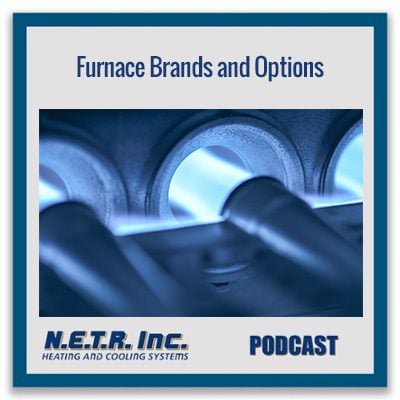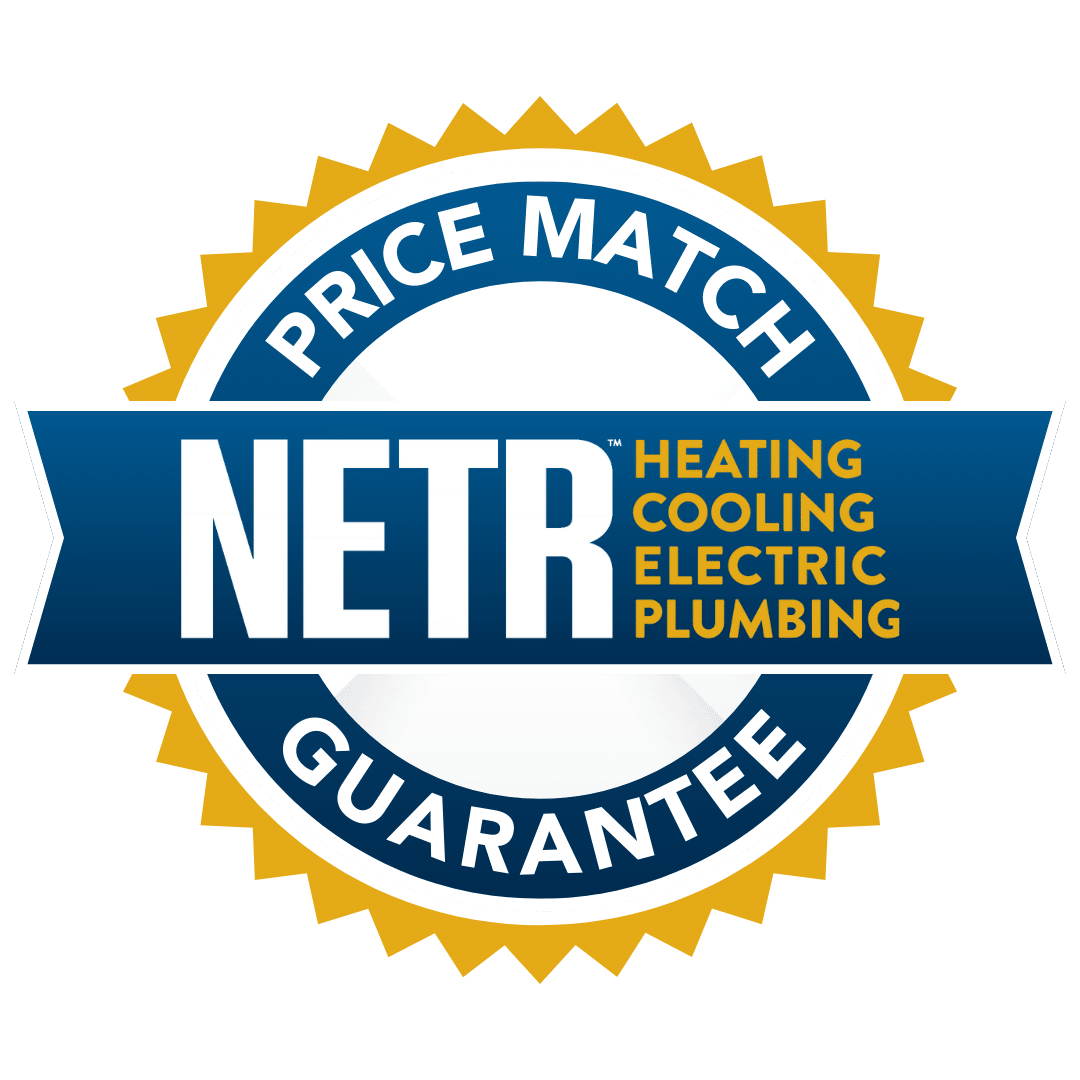
Mike Cappuccio, owner of N.E.T.R.. Inc., a residential and commercial heating and cooling company based in Massachusetts,, discusses furnace brands and options.
John Maher: Hi, I’m John Maher. I’m here today with Mike Cappuccio, owner of N.E.T.R. Inc., a heating and cooling company in Massachusetts. And we’re talking today about furnace brands and options. Welcome, Mike.
Mike Cappuccio: Good afternoon, John. How are you?
Furnace Brands
John: Good, thanks. So, Mike, what are some of the brands that are available for furnaces?
Mike: Oh, there’s a lot of different brands out there today. John, for furnaces. Residential offers a lot more brands than commercial does as far as furnaces go. I mean, there’s everything from American Standard, Trane, Carrier, Payne, Armstrong, Maytag, Rheem, Ruud. Oh God, I could go on and on and on. There’s probably a hundred different brands of residential furnaces that you could buy today. There really are a lot of them.
John: And how important is the brand in terms of how it works, and how do I know that I’m getting a good brand?
Mike: Well, I mean, John, from a working perspective, they all basically work the same, they really do. When you look at the different ways that they do operate, I mean, as I said in prior podcasts, I mean, a furnace basically has a gas valve, gas comes into it or oil or propane, whatever type of fuel ignites it, and it basically has flames that go into a warm heat exchanger and you run a fan over that particular furnace. I mean, as far as the brands go, now you’ve got to kind of look at, well, what brand am I getting and maybe what type of warranty am I getting with that brand, and what efficiency furnace am I buying with that brand? But there are just so many different brands out there today for furnaces, it’s hard to even keep up with most of all of them now, because I mean, you have, I’m going to get back to the four major manufacturers, you have Trane, Lennox, Carrier, YORK. I mean, they all make spinoff brands of different furnaces.
When you look at YORK, I mean, YORK makes, basically they make Luxaire, they make Coleman, a couple other ones, I can’t even think of the names, but if you were to look at the furnace and physically look at it, John, it’s a York furnace just with a different brand name on it. Same thing with Carrier, when you look at Carrier, Bryant, Payne, a lot of those furnaces are all the same. They come out of the same factory most of the time. When you look at Goodman, Goodman’s the same way. Goodman makes Daikin units, they make Goodman units, they make Amana units. I mean, so a lot of these Amana, Maytag, a lot of them are all the same particular piece of equipment coming out of the same factory.
I know a Nordyne factory makes a lot of different brands of furnaces. So, a lot of times it’s the same components, just in a different shell, I would say. It’s like a submarine sandwich, they’re all submarine sandwiches, but this might be a little bit something different in the middle of it, you know?
John: Right.
Mike: But at the end of the day, there’s still a piece of bread wrapped around it.
Furnaces and Energy Efficiency
John: So what should I be looking for in terms of energy efficiency, is a certain percentage of energy efficiency what I should be aiming for?
Mike: Well, the minimum amount of energy efficiency you can get now with a, let’s talk about gas furnaces, is an 80% gas furnace. I mean, that’s the lowest efficiency furnace that you get today. It’s not really something I would recommend. A lot of times it gets used in replacement jobs where someone has an 80% furnace and they just want an 80% furnace put back in, 80% efficiency. Now we do have 92% efficiency furnaces. We have 98% efficiency furnaces where the flue gases are being reused to create that efficiency, to get the highest efficiency out of that furnace that you can get. And by doing that, there’s a lot of substantial rebates that you get along with that, too.
Equipment costs a little more, it’s vented differently. An 80% furnace is usually vented with a power type vent and it does not need a fresh air intake. With these 92 and 98% furnaces, they’re usually vented with PVC to the outside of the home, and there’s a fresh air intake that pulls fresh air into the furnace and then there’s an exhaust that exhausts air out. So when you do see these types of furnaces with white PVC venting on them or gray PVC venting, that’s usually a high efficiency type furnace. Those are usually the furnaces that you’re seeing used today in most newer homes or replacement type furnaces now.
Furnace Options
John: Talk a little bit about the options that are available with furnaces and what are really kind of the important options that I really should be looking at.
Mike: Well, definitely some options you want to be looking at with furnaces now, today, John and with any system is, how am I going to control it first? What am I going to use for a thermostat? Do I want a WiFi thermostat? Do I want something I can operate from a smart device? Some systems today don’t even have thermostats. Everything gets operated from a smart device. One of the big options we’re seeing today, do people want an ecobee thermostat, a Nest thermostat, a Honeywell thermostat? How do I want to control it? Where do I want to control it from? What can I do with it? And the other options, too, that really come into play a lot are filtration. What type of filtration do I want to put onto my heating and air conditioning system? Do I want electronic air filtration? Do I just want the standard one-inch filter that comes with it? Do I want a four-inch media filter that would come with it?
A lot of things that are coming out now, big now with the virus and everything that’s around with COVID is UV lighting. Am I going to add UV lighting into my duct work, so I can kill the bacteria that’s being run through the system? That’s a very, very, very popular option right now that we’re seeing happen on most systems. Some of the other things, too, that you’ve really got to look at with gas furnaces, with hot air furnaces is humidification. Do I want steam humidification? Do I just want cold water humidification? Basically, a humidifier, is humidity important to me in my home? And with a lot of these homes now today, a lot of residential homes are very tight, people add new windows, and they’re very dry, so you do add humidification.
And then probably one of the most important options that gets missed a lot is fresh air systems. How much fresh air do I want to introduce into my heating and air conditioning system that I can change the air in my house? Because you got to think about it, all winter, you don’t open the windows, you don’t open the windows at all sometimes, and you’ve got all this stale air in your house. And you use an ERV or an HRV and bring some fresh air in and exhaust that fresh air, remove the stale air, bring the fresh air in and exhaust the fresh air, exhaust the stale air outside and bring the fresh air in through the vents and push that right into the house. So you’re changing the air.
So there’s a lot of different options you can add onto a furnace right now and an air conditioning system for what I want to do in my home. And then you also got to look at not just the options, but what option furnace do I want? Do I want a high efficiency, low efficiency? Do I want a variable speed fan? Do I want the fan to be able to speed up and slow down upon needs? There are so many different ways that you… What system fits best in my home?
John: And how do I know that, Mike? Do you come into my house and look at what types of windows and insulation I have in my house, maybe what my current furnace is, what options, you could talk to me and figure out what kind of options that I want, like a WiFi thermostat and things like that, and then you help me to pick out what the best furnace is for me and my situation?
Mike: That is all going to get discussed on the in-home consultation, John. And we’ve got to look at, “Okay, have you put windows in your house? What have you done to your home in the past 20 years?” I mean, we see now that a lot of people have insulated their homes, and they’ve insulated walls, they’ve insulated their attics, they’ve changed the windows. I’m going to tell you, most furnaces that we see, most furnaces and boilers we see in homes, have been oversized from back in the ’80s or ’70s, things like that, where something might have been in the home for 30, 40 years sometimes, and it’s way oversized. So you got to look at it and say, “Okay, how am I going to vent it first off?” If it’s an old 80% furnace, well, now that’s being vented into a chimney. We can’t vent that into your chimney anymore without lining your chimney.
We need to look at that. We need to see, “Okay, how are we going to vent it?” And then we’ll talk to you because now things might have changed. You might have kids in the home, someone might be asthmatic, breathing problems. What type of filtration do you want? I can give you a standard filter. This filter is going to give… Air quality, air quality is a big thing today. Do you want UV lights? This is what a UV light would do. This is what a high efficiency media filter would do. You’ve really got to look at how you live, what’s the budget, what am I trying to accomplish inside my home? And a lot of people say, “My house is always dry in the wintertime. I’m so tired of my nose cracking and my lips cracking and my fingers cracking and whatever because my house has always at 20% relative humidity in the wintertime.”
Well, that’s because you have a hot, hot system. It’s just the air coming out is so dry and you need to add humidification to it. And at that point, do I want steam humidification? Do I want just regular cold water humidification? There’s a lot of different things you can do, but we’ve got to find out how you live, what is important to you as the homeowner. You might say, “Hey, I can live with a one-inch filter. I’d rather have humidification and the UV light.”
John: Right. So working through those, like you said, how I live, what are the things that are important to me, and then you can help to-
Mike: What’s important to you?
John:– choose the options that make sense.
Mike: Yeah. What is really important to you and your family, John? I mean, a lot of times we see it’s humidification and filtration.
John: All right. Well, that’s great advice, Mike. Thanks again for speaking with me today.
Mike: You’re welcome, John.
John: And for more information, visit the N.E.T.R. website at netrinc.com or call 781-933-NETR, that’s 781- 933-6387.

